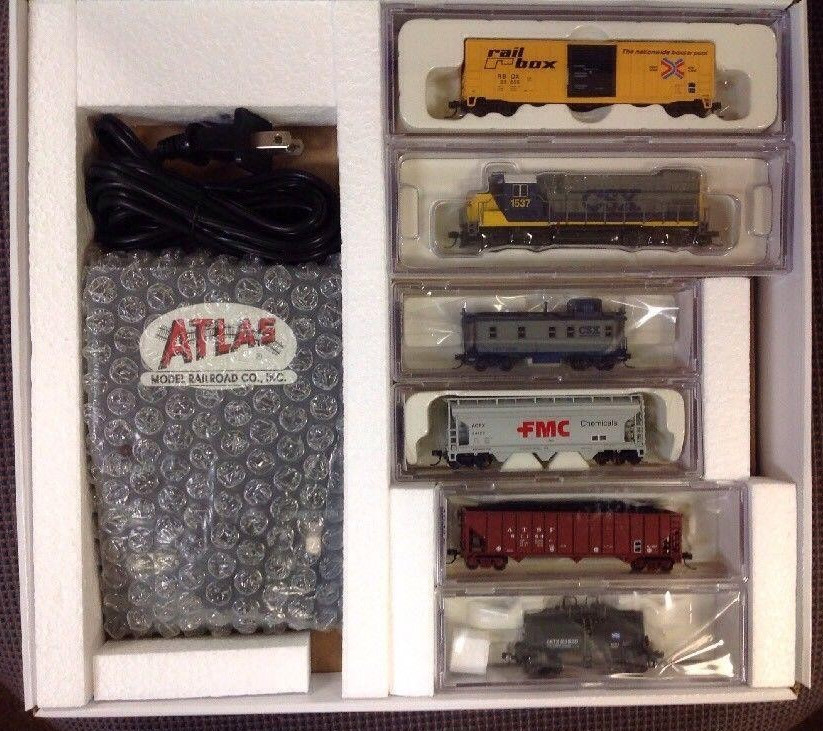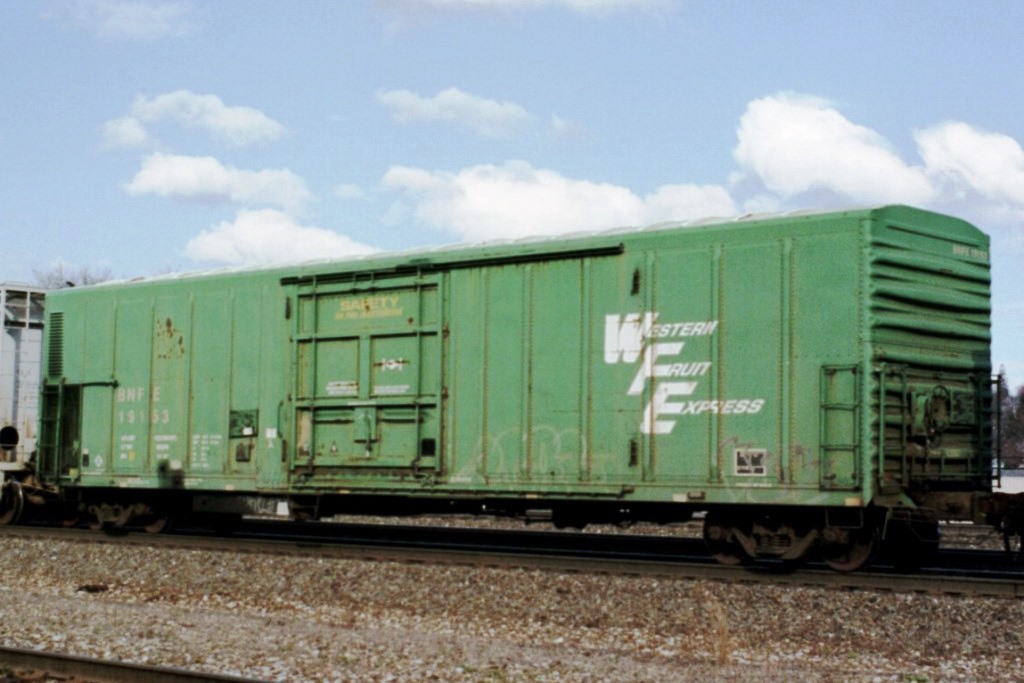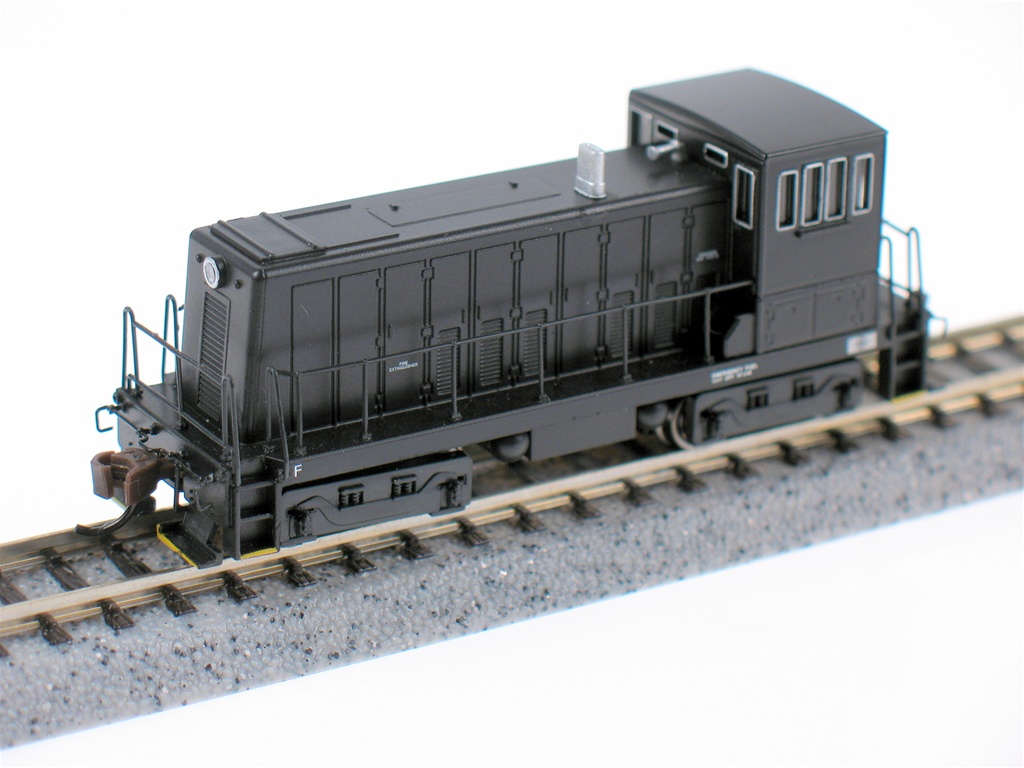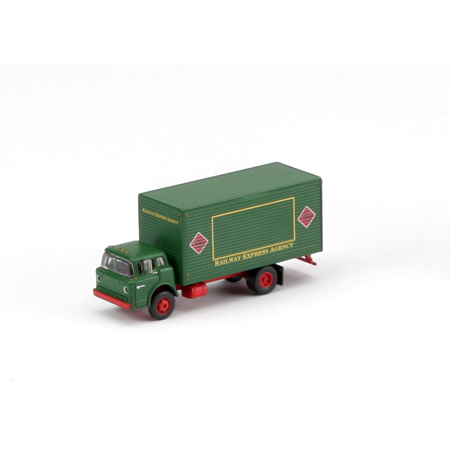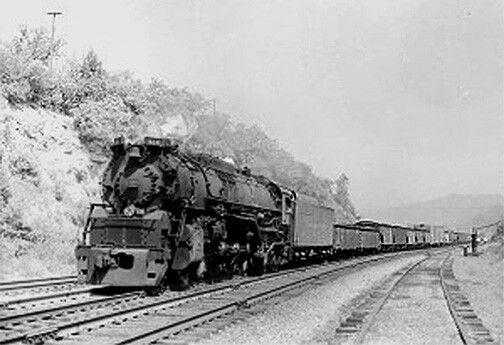Specific Item Information: Contents:
- Locomotive: GP15-1 CSX #1537,
- Cupola Caboose: CSX C-3766,
- ACF® 50’-6” Box Car: Railbox (Early) #33655,
- ACF® 3560 Covered Hopper: FMC Chemical #64128,
- Beer Can Tank Car: GATX #23820,
- 90-Ton Coal Hopper: Santa Fe #81104
- Locomotive: GP15-1 CSX #1537,
- Cupola Caboose: CSX C-3766,
- ACF® 50’-6” Box Car: Railbox (Early) #33655,
- ACF® 3560 Covered Hopper: FMC Chemical #64128,
- Beer Can Tank Car: GATX #23820,
- 90-Ton Coal Hopper: Santa Fe #81104
Model Information: These train sets were comprised of only 'Trainman' locomotives and rolling stock: one EMD GP15-1 locomotive (the only locomotive in the Atlas 'Trainman' roster at the time) and a matching caboose of the same roadname, plus 4 other freight cars with various roadnames.
They were produced in 4 batches between 2008 and 2011. All the sets produced a given year were sharing the same 4 intermediate freight cars and only differing by their locomotive and caboose.
In addition, the set was comprised of:
- 24" x 30" True-Track ® Loop: 16 pcs 11" Radius Curve, 6" Straight, 6" Rerailer
- Terminal joiners
- Power pack
- Instruction Sheet, Warranty Card
They were produced in 4 batches between 2008 and 2011. All the sets produced a given year were sharing the same 4 intermediate freight cars and only differing by their locomotive and caboose.
In addition, the set was comprised of:
- 24" x 30" True-Track ® Loop: 16 pcs 11" Radius Curve, 6" Straight, 6" Rerailer
- Terminal joiners
- Power pack
- Instruction Sheet, Warranty Card
DCC Information: The GP15-1 is DCC ready. See here for more details on this locomotive model and compatible decoders.
Prototype History: A mixed freight train is a train that hauls a variety of different freight cars or wagons. A mixed freight depends on the locale and industries. The train will be carrying cars to be brought to a yard where a local will bring them to the various industries. The location determines the industries, and the industries determine the cars.
Which cars are in which trains is determined by the waybills they are assigned - which is close to a totally random process. For example, through freights simply run from up staging to down staging and back, stopping long enough to trade out 30 percent of their cars and change from steam to motor (catenary) or vice-versa. Thus freights will have a variety of cars, changing each time they pass through a switching yard.
Which cars are in which trains is determined by the waybills they are assigned - which is close to a totally random process. For example, through freights simply run from up staging to down staging and back, stopping long enough to trade out 30 percent of their cars and change from steam to motor (catenary) or vice-versa. Thus freights will have a variety of cars, changing each time they pass through a switching yard.
Road Name History: CSX Transportation (reporting mark CSXT) is a Class I railroad in the United States. The main subsidiary of the CSX Corporation, the railroad is headquartered in Jacksonville, Florida, and owns about 21,000 route miles (34,000 km). CSX operates one of the three Class I railroads serving most of the East Coast, the other two being the Norfolk Southern Railway (NS) and Canadian Pacific Railway. It also serves the Canadian provinces of Ontario and Quebec. Together CSX and Norfolk Southern Railway have a duopoly over all east-west freight rail traffic east of the Mississippi River. As of October 1, 2014 CSX's total public stock value was slightly over $32 billion.
CSX Transportation was formed on November 1, 1980, by combining the railroads of the former Chessie System with Seaboard Coast Line Industries, and finally with the Seaboard System Railroad in 1986. The originator of the Seaboard System was the former Seaboard Air Line Railroad, which previously merged with the Atlantic Coast Line Railroad in 1967, and later with the Louisville & Nashville Railroad, as well as several smaller subsidiaries such as the Clinchfield Railroad, Atlanta & West Point Railroad, Monon Railroad and the Georgia Railroad. The origin of the Chessie System was the former Chesapeake & Ohio Railway, which had merged with the Baltimore & Ohio Railroad, and the Western Maryland Railway.
Read more on Wikipedia.
CSX Transportation was formed on November 1, 1980, by combining the railroads of the former Chessie System with Seaboard Coast Line Industries, and finally with the Seaboard System Railroad in 1986. The originator of the Seaboard System was the former Seaboard Air Line Railroad, which previously merged with the Atlantic Coast Line Railroad in 1967, and later with the Louisville & Nashville Railroad, as well as several smaller subsidiaries such as the Clinchfield Railroad, Atlanta & West Point Railroad, Monon Railroad and the Georgia Railroad. The origin of the Chessie System was the former Chesapeake & Ohio Railway, which had merged with the Baltimore & Ohio Railroad, and the Western Maryland Railway.
Read more on Wikipedia.
Brand/Importer Information: In 1924 Stephan Schaffan, Sr. founded the Atlas Tool Company in Newark, New Jersey. In 1933 his son, Stephan Schaffan, Jr., came to work for his father at the age of sixteen. Steve Jr. built model airplanes as a hobby and frequented a local hobby shop. Being an enterprising young man, he would often ask the owner if there was anything he could do to earn some extra spending money. Tired of listening to his requests, the hobby-store owner threw some model railroad track parts his way and said, "Here, see if you can improve on this".
In those days, railroad modelers had to assemble and build everything from scratch. Steve Jr. created a "switch kit" which sold so well, that the entire family worked on them in the basement at night, while doing business as usual in the machine shop during the day.
Subsequently, Steve Jr. engineered the stapling of rail to fiber track, along with inventing the first practical rail joiner and pre-assembled turnouts and flexible track. All of these products, and more, helped to popularize model railroading and assisted in the creation of a mass-market hobby. The budding entrepreneur quickly outgrew the limitations of a basement and small garage operation. Realizing they could actually make a living selling track and related products, Steve and his father had the first factory built in Hillside, New Jersey at 413 Florence Avenue in 1947. On September 30, 1949, the Atlas Tool Company was officially incorporated as a New Jersey company.
In 1985, Steve was honored posthumously for his inventions by the Model Railroad Industry Association and was inducted into the Model Railroad Industry Hall of Fame in Baltimore, Maryland. In addition, Steve was nominated and entered into the National Model Railroad Association Pioneers of Model Railroading in 1995.
In the early 1990s, the Atlas Tool Company changed its name to Atlas Model Railroad Company, Inc.
In those days, railroad modelers had to assemble and build everything from scratch. Steve Jr. created a "switch kit" which sold so well, that the entire family worked on them in the basement at night, while doing business as usual in the machine shop during the day.
Subsequently, Steve Jr. engineered the stapling of rail to fiber track, along with inventing the first practical rail joiner and pre-assembled turnouts and flexible track. All of these products, and more, helped to popularize model railroading and assisted in the creation of a mass-market hobby. The budding entrepreneur quickly outgrew the limitations of a basement and small garage operation. Realizing they could actually make a living selling track and related products, Steve and his father had the first factory built in Hillside, New Jersey at 413 Florence Avenue in 1947. On September 30, 1949, the Atlas Tool Company was officially incorporated as a New Jersey company.
In 1985, Steve was honored posthumously for his inventions by the Model Railroad Industry Association and was inducted into the Model Railroad Industry Hall of Fame in Baltimore, Maryland. In addition, Steve was nominated and entered into the National Model Railroad Association Pioneers of Model Railroading in 1995.
In the early 1990s, the Atlas Tool Company changed its name to Atlas Model Railroad Company, Inc.
Manufacturer Information: 'Atlas Model Railroad' represents the New Jersey manufacturing facility for Atlas brand model railroad products. Atlas also imported European made models in their early years and those items will be noted as having manufacturers set appropriately. In the 1990s Atlas moved all their toolings to China.
Item created by: Powderman on 2020-03-04 16:32:10. Last edited by Lethe on 2020-05-07 00:00:00
If you see errors or missing data in this entry, please feel free to log in and edit it. Anyone with a Gmail account can log in instantly.
If you see errors or missing data in this entry, please feel free to log in and edit it. Anyone with a Gmail account can log in instantly.


